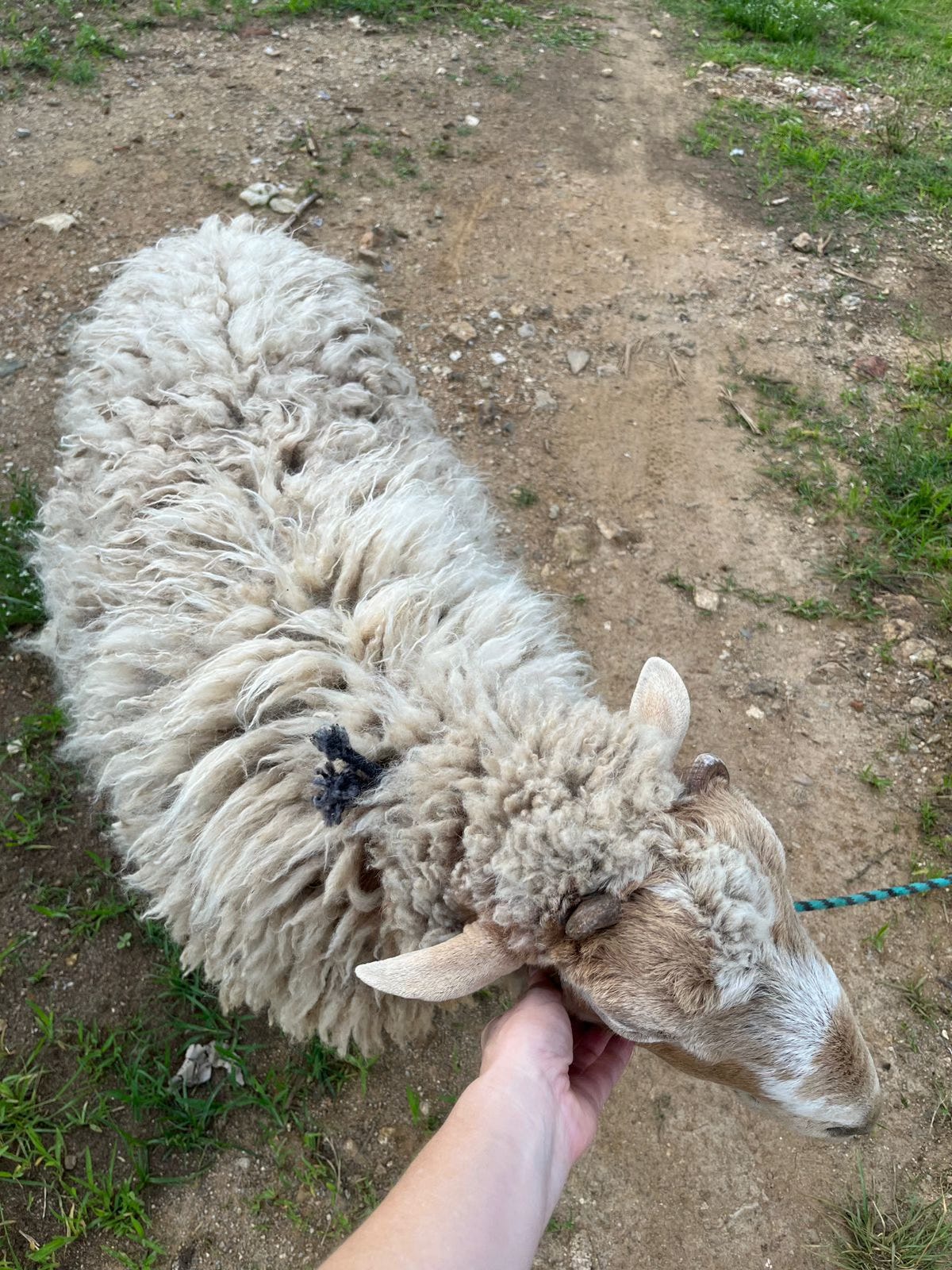La Fiesta Part 2: La Cevicheria
An extraordinary and unusual meal for my mom's milestone birthday.
Last week’s entry was about selecting a piñata for my mom’s milestone birthday celebration in Oaxaca, but that was only one small piece of the celebration. Our main focus was the birthday meal.
Ours is a food family by inclination, desire, and training. I learned to cook from my mom, who for over 20 years was a recipe tester for the New York Times. My father is an inveterate wine drinker (and collector). Obviously I ended up living a life devoted in large part to food and drink. What we would serve for my mom’s birthday wasn’t just important, it was *the center* of the entire celebration, upon which everything else would orbit.
No pressure!
A few ideas immediately came to mind. We could get tacos de canasta, a type of taco made from a single, small tortilla filled with a very thin layer of meat. After it’s filled the tortilla is folded over (making it look like a tiny quesadilla) and the tacos are soaked in either oil or lard (or butter, the internet says) and then stored in baskets (canastas) or buckets. Tacos de canasta are inexpensive, typically anywhere from 10-50 cents each depending on the filling and who you buy them from, but they’re fun, and because they’re so small you need anywhere from 5-10 to make them a meal.
The idea of a huge bucket of tacos complete with condiments felt like a great idea but also not quite fancy enough. Seeking an option perhaps just a little bit more formal we turned, as always, to our friend Ehren for advice.
“What about Barbacoa?” Ehren said via text message. Barbacoa is effectively Mexican barbecue, although it shares virtually no similarities with what Americans think of when they hear the word “barbecue.” Here it’s predominantly made with either goat or lamb (although beef is also popular) and Ehren said she knows someone in her own village, San Andrés Huayapam, whose family prepares Barbacoa the traditional way by digging a pit in their backyard which they line with bricks. A fire is made at the bottom of the pit and is allowed to burn down to coals, after which it’s lined with maguey leaves onto which the seasoned meat is placed. The top of the hole is then covered with more leaves as well as either foil or a metal plate, after which the pit is covered with soil. The sealed, meat-filled hole is then left alone while the meat gently roasts/steams underground. The resulting meat and broth (consommé) are incredible, and it’s a feast suited for a celebration.
The problem with having Barbacoa was two-fold. First, because it’s the rainy season the woman Ehren recommended said the family’s pit was at risk of filling with water, making it impossible to ensure the Barbacoa would be completely cooked. Second, Ehren knew and liked the sheep that would literally be on the chopping block. If we ordered Barbacoa from this particular family we’d be eating Ehren’s animal pal.
We couldn’t serve half-cooked meat from a hole in the ground to family visiting from the United States, and it felt pretty gruesome to know that with every bite we’d be consuming Ehren’s favorite neighborhood sheep. Barbacoa, at least from these folks, was out.
At this point we were starting to feel a bit stymied. When we messaged a local food truck we like that sells ceviche on the side of the highway (it’s good, I swear) they didn’t respond to the message. When we thought about the possibility of hiring someone to set up a grill and make tlayudas somehow that also didn’t feel right (how would you even go about locating someone who could do that?)
We remembered, though, that Ehren had once ordered ceviche to-go from La Cevicheria, one of her and her husband Erick’s favorite restaurants. Maybe that would work for us as well.
“Hola, buen día” I wrote to the restaurant via WhatsApp. “Vamos a tener una fiesta para mi mamá y necesitamos un orden para llevar. Este es para 10 adultos, 2 niños. Tiene un menú separado para fiestas, o es el menú normal?” We’re having a party for my mom and want a to-go order, I said, for 10 adults and two kids. Is there a separate menu for catering?
Soon I received a reply back from Irving Zuñiga, who we didn’t realize until much later is the head chef (and we think owner) of the restaurant.
“Si el pedido solicitado es para recoger y llevar a casa es el menú que ya tenemos establecido, pero si es para “Chef en casa” podemos ofrecerles un menú adecuado a sus necesidades y preferencias.”
Huh, I thought. Could this mean what I think it does?
“¿Podrías contarme más sobre la opción de “chef en casa” por favor?” I wrote. “Could you please tell me more about the “chef at home” option?”
Years ago my mom gave me some advice about travel writing which, despite the persisting popularity of influencers, I think is true: nobody wants to hear about your fabulous vacation. I certainly think that also applies to this newsletter. Real escapism—or at least healthy escapism—isn’t about reveling in someone else’s luxurious life. Rather it’s about being able to picture yourself living a different type of life in another place. The best writing makes it feel tangible, and maybe even possible.
When the chef Irving told us about the chef-at-home option offered by La Cevicheria we asked for more information entirely out of curiosity while also thinking, well, there’s no way we’ll be able to afford this. This is real luxury, the impossible kind, and you’ve gotta be a pretty big asshole, I thought, to have the kind of money where the chef comes to your house and prepares a restaurant-quality menu. But it can’t hurt to look, right?
Chef Irving sent us three sample menus based around the food restrictions and preferences of my soon-to-be-visiting family members and we began looking up the dishes he mentioned on the restaurant’s Instagram feed.
The mango ceviche looked fabulous. A definite yes for that as a starter.
Grilled octopus with yellow mole, one of Oaxaca’s famed seven moles? Incredible, and iconic. Choosing octopus felt like a little bit of a risk but nobody explicitly said they don't like it other than my sister who doesn’t eat seafood of any sort other than shrimp.
Every dish we looked up seemed fantastic and the meal included the use of their silverware, plates, cups, and linens, and they’d also supply beverages and table service. But how much would all of this cost?
“El costo por adultos es de $800,” the chef wrote. That’s around $42 dollars. With the transportation fee and a tip, it would be more like $50 a person.
$50 a person for a catered meal prepared by the chef and his team in our own home. In the United States this would have been completely impossible and we wouldn’t have been able to afford to have chefs come to our house to prepare a meal like this. In Mexico, it turns out, we are the kind of assholes who can afford for a chef to come cook in our own kitchen!
The idea of in-home catering felt so outlandish we decided to first run the idea by my dad.
“Well, how much does it cost?” He said to us over the phone. When we told him the price and about the other options we’d been considering he thought for all of 30 seconds before he said, “If you think this is what you want to do I think you should do it, but I also want to pay for half of it as a gift for your mother.”
We could afford the expense without his help, and we hadn’t called with the hope that he’d offer us money, but when we had budgeted for my family’s visit it hadn’t included an extra $500+ expense. Him offering to pay for half of it pushed us from thinking the meal would be luxurious and memorable, if a stretch, to being luxurious, memorable, and feasible.
We had figured out our plan and it was shaping up to be the most memorable celebration of our lives. All that was left was for us to actually throw the party.
Author note: Part three, the finale to this story, will be published next week, after which free posts will return to their regular more episodic formatting. Stay tuned!








